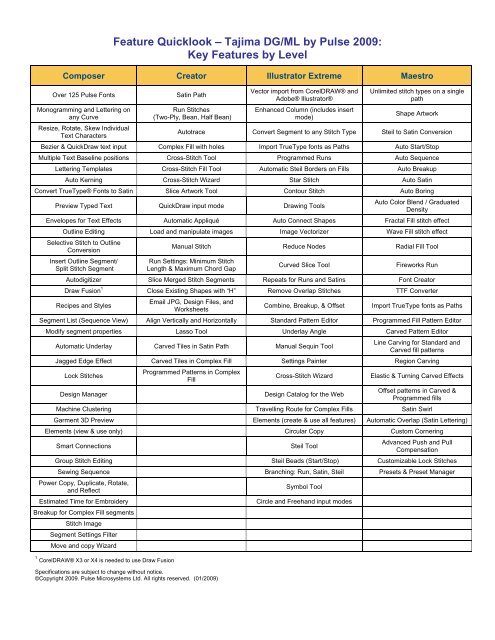

Stitchport allowed for factory automation as multiple machines connected to a server could receive their instructions from software running in this server. In 2000, a server-based embroidery (software) engine was developed and named Stitchport. These advances in computerized machine embroidery allowed Brother Industries to enter a relatively mature market after it had served other companies by building their sewing heads.ĭevelopments of machine hardware continued apace, alongside software advances, and in the 1990s, Pulse Microsystems developed embroidery software that could be accessed from a network operated by a central server. In 1983, Tajima made the lock-stitch CEM, which was followed by the 9-needle type machine in 1984, and then a sequin embroidery machine in 1986.Ī year later (in 1987), Pulse Microsystems released DDS, a digital asset management software that could store embroidery designs as digitized embroidery patterns, as well as allow machine operators to access these embroidery designs. Relatedly, Melco improved its digitizing system to support arched lettering and sewing of circles using satin stitch, and Wilcom then improved on this technology by giving it a multi-user system profile that allowed different people to manage different aspects of the embroidery process, hence streamlining computerized machine embroidery and making it efficient. In 1982, Tajima introduced an electronic multiple-head chenille embroidery machine (CEM), and later in the year introduced an automatic frame changer to be used in rolled textile embroidery.Īlso, in 1982, Pulse Microsystems released Stitchworks, an embroidery software that allowed outlines to be converted into stitches, and this allowed fabric decorators to create exquisite fabric art using software that could be installed in a personal computer (PC). Digitrac worked by ensuring that the needle made the stitch at the right location in the fabric. Later in 1980, Melco introduced a digitizing system called Digitrac that allowed a computer to guide the needle to make stitches. It allowed for digital embroidery patterns to be created as computer graphics and then sent (or exported) to the machine.Īt the same time, Melco created a sample head for use with Schiffli looms. The first computer graphics program for the creation and exportation of embroidery designs was made by Wilcom in 1980. Later in 1980, the first computer-controlled embroidery machine was introduced to the market. In 1978, Tajima debuted a machine that supported the automatic color change.

In 1973, Tajima introduced a machine that had 6 needles, each carrying a thread of a different color. Before 1964, machine embroidery used punch cards as instruction sets (that is, sources of instructions on what the machine should do). The first automatic embroidery machine came with multiple sewing heads, and it was made by Tajima in 1964.


 0 kommentar(er)
0 kommentar(er)
